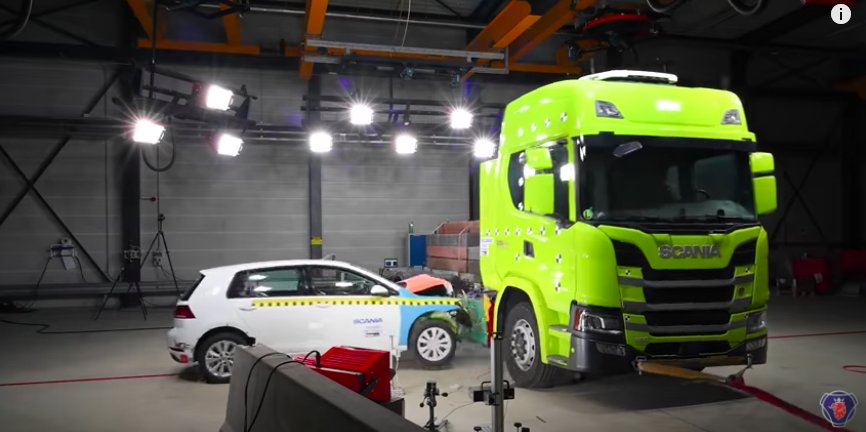See Scania Sacrifice VW Golf In The Name Of EV Safety Research

How does a Volkswagen Golf fare in a collision with a big rig? There isn't any scenario that ends well for the VeeDub, but know that this valiant Golf gave its life for the advancement of technology and the safety of us all. As for the big truck? It looks pretty much the same, but the survival of either vehicle isn't the point of this test.
Electric vehicles are the future of motoring, like it or not. Actually, electric power is also prolific in present-day motoring, and Scania is deep into testing to ensure potentially volatile battery packs for its electrically infused semis are as secure as possible during a collision. As with any such testing, that means orchestrating a dramatic real-life crash in a controlled environment and for this scenario, a plucky VW Golf was called in for a sacrifice.
Of course, it's not as simple as that. As Scania explains in a press release on the test, several months of planning, simulations, and more planning came before the real-world execution. The goal for engineers isn't so much to learn from the actual crash, but to have the crash confirm what was learned during the simulations. It's also a far less expensive way to conduct research and development.
Battery packs present a unique problem in that you really don't want them to rupture in a crash. As such, Scania's approach is not unlike creating a passenger compartment that deflects or absorbs energy from a crash to protect the occupants inside. For this test, the battery pack is designed to deform, absorbing impact energy while also transferring energy to less critical components. The speed at which the VW hits the truck is unknown, but one look at the Golf's crumpled front end tells us the little hatchback definitely took the worst punishment.
More importantly, the months of development and simulations paid off. Despite taking a direct impact, the battery shell did its job. None of the cells within suffered any damage.
Related News
